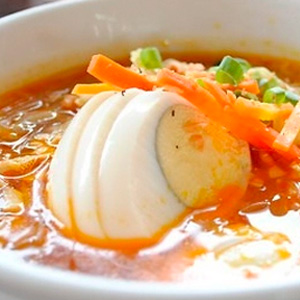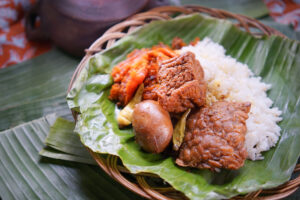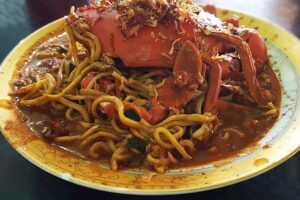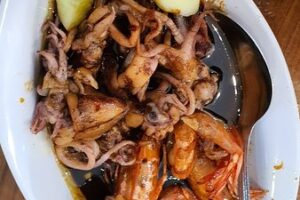In the heart of Indonesia, where bustling markets and narrow alleys come alive with the scent of sizzling food, traditional street snacks known as jajanan pasar hold a special place in the cultural and culinary landscape. These delicacies are not only a source of sustenance but also a reflection of Indonesia’s rich heritage and regional diversity. From the savory to the sweet, these snacks have been passed down through generations, evolving while retaining their core essence. This article explores the history, variety, and significance of jajanan pasar, highlighting how they continue to thrive in modern society.
The Origins and Evolution of Jajanan Pasar
Jajanan pasar, or traditional street snacks, have deep roots in Indonesian culture. According to historical records, these snacks were once sold in local markets and served as a common snack for communities. Over time, they have evolved into a symbol of cultural identity, representing the unique flavors and traditions of different regions across the archipelago. As noted by research from the University of San Diego, jajanan pasar has played a role in preserving cultural practices and even serves as an educational tool in teaching children about math and cultural values through their shapes, colors, and traditional patterns.
Today, many of these snacks have found new life in contemporary settings, blending traditional recipes with modern twists to appeal to younger generations. Despite the influx of international foods, jajanan pasar remains a beloved part of daily life, offering a taste of nostalgia and tradition.
Popular Types of Jajanan Pasar
There is a vast array of jajanan pasar, each with its own distinct flavor, texture, and preparation method. Here are some of the most iconic examples:
-
Kue Pancong: Made from rice flour, coconut milk, and grated coconut, this crispy and savory snack is often served warm with a sprinkle of sugar.
-
Onde-onde: These small, round balls are made from glutinous rice flour and filled with sweet mung bean paste. They are coated in sesame seeds and are a favorite among locals.
-
Kue Klepon: Similar to onde-onde, klepon is a green rice cake filled with palm sugar and topped with grated coconut.
-
Putu Mayang: A colorful, noodle-like snack made from rice flour and served with a sweet syrup of palm sugar and coconut milk.
-
Lumpia: A popular fried spring roll filled with vegetables, meat, or shrimp, often enjoyed with a tangy sauce.
-
Gulali: Traditional hard candy made by heating sugar and shaping it into various forms like animals or flowers.
-
Bubur Sumsum: A creamy porridge made from rice flour and coconut milk, often topped with black glutinous rice or candied fruits.
-
Kerak Telur: A crispy omelet made from egg, flour, and spices, commonly found in Jakarta.
-
Nagasari: A steamed banana cake wrapped in banana leaves, offering a soft and chewy texture.
-
Kue Cenil: A delicate, jelly-like snack made from cassava starch, often served with grated coconut and sugar.
The Cultural Significance of Jajanan Pasar
Beyond their delicious taste, jajanan pasar plays a vital role in preserving Indonesia’s cultural identity. Many of these snacks are associated with specific regions and are often prepared during festivals, weddings, or religious ceremonies. For example, lemper (steamed rice cakes filled with chicken or beef) is commonly seen in Yogyakarta, while carabikang (a sweet, chewy snack) is popular in Central Java.
Moreover, these snacks serve as a bridge between generations, connecting younger people with their roots. As urbanization continues to reshape the way people live, jajanan pasar offers a comforting reminder of the past, allowing individuals to reconnect with their heritage through simple, flavorful bites.
Modern Adaptations and Global Influence
While many jajanan pasar remain unchanged, some have been adapted to suit modern tastes. For instance, pukis (a type of pancake) now comes in various flavors, including chocolate and cheese, while kue lapis (layered cake) is often sold in trendy cafes alongside Western desserts. This fusion of old and new has helped keep these traditional snacks relevant in today’s fast-paced world.
Additionally, the global rise of food tourism has brought more attention to jajanan pasar. Travelers seeking authentic experiences are increasingly drawn to local markets, eager to sample these unique treats. As a result, some vendors have started to package their snacks for export, further expanding the reach of Indonesian street food.
Conclusion
Traditional Indonesian street snacks, or jajanan pasar, are more than just a quick bite—they are a celebration of culture, history, and community. With their diverse flavors and deep-rooted traditions, these snacks continue to captivate both locals and visitors alike. Whether you’re savoring a crispy kue pancong or a sweet klepon, each bite tells a story of Indonesia’s rich culinary heritage. As the world becomes more interconnected, it is essential to preserve and appreciate these time-honored delicacies, ensuring that they remain a cherished part of Indonesian life for generations to come.










